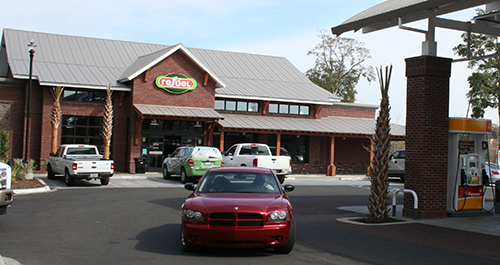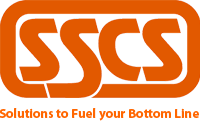The SSCS Interview: Mark Jordan of Refuel, Inc. (Part 2)
If you missed part 1 of this interview, which contains an introduction that provides background on SSCS customer Mark Jordan and his multi-site operation, Refuel, Inc. and explains his approach to Food Service, please click here.

SSCS: You mentioned that when it comes to Food Service you have to forget everything you know about retail and think opposite. Can you elaborate on what you mean by that?
MJ: We didn’t understand Food Service food costs at all in the beginning, especially from an accounting perspective. It nearly killed the business. These costs are sneaky, and you need to have a digital scale if you want a chance to make a go of it. You have to track every single component of a recipe—you have to deconstruct the recipe to the most detailed level possible—and that takes a lot of patience together with the right technology.
For example, when we first started making salads, our food costs were phenomenally high, and we couldn’t figure out why. So we studied the program and broke it down and we found out that we were just getting killed on lettuce, of all things. It doesn’t seem like lettuce would be that costly, but in the context of what is acceptable to charge for a salad at a convenience store, it is.
After we studied the issue some more, we found that something as simple as buying a plastic salad container a half inch less deep made a difference. That half inch was being filled with fluffy lettuce that no one wanted anyway. This study of lettuce use in salad led us to evaluate the use of salad on literally 50 other Food Service items on which we included lettuce. Sounds like a lot of work, and it was, but using lettuce on so many items at least gave us the chance to make a mass adjustment based on our findings instead of having to make 50 adjustments on 50 different components.
If you want to be profitable with Food Service you have to think more like a manufacturer of products than as a retailer. You have to calculate item costs by drilling down into component costs. Once you’ve done this, you have to figure out how many assembled units you must sell for the program to be viable. That’s not as simple as it sounds because you have to factor in waste, which is inevitable with freshly made items. How much waste is going to make sense per assembled unit? You need to have an answer.
Once you have established a viable food cost goal, you need to check in on cost trends on a regular basis, to see if you are meeting those cost goals and if the needle is being moved at all in relation to them. We check on Food Service costs weekly and we monitor our volumes daily.
When you break down your component costs for any assembled item—be it a salad, a sub, a fountain drink, or a cup of coffee—more often than not you’ll find that your related costs are astonishing. The scary part is that you would never know your profits are eroding without a detailed analysis. Sugar costs go through the roof because one customer uses one sugar and another customer uses nine. You’ll never get away from that kind of behavior, but you can understand it and make the appropriate pricing adjustments by analyzing costs scientifically.
SSCS: I get the impression you can’t afford to learn Food Service on the fly. But how can you possibly prepare yourself?
MJ: You might expect that my experience before Refuel, Inc. prepared me for the job, but that wasn’t true at all. I basically did everything wrong many, many times, including how I approached Food Service and my attempts to integrate it into the operation.
One thing I did right, though, was visit the chains I knew did Food Service best: Sheetz, Wawa and QuickChek. Another company I’ve come to admire in the Midwest is Casey’s General Store. What they do is not only successful, but easy-to-understand and integrate.
I also went to the NACS CAFÉ, the curriculum for achieving Food Service excellence which is sponsored by the Association for Convenience and Food Retailing (NACS). The seminars and workshops they provided filled in a lot of the Food Service blanks for me. I would highly recommend the perspective they provide to anybody who is thinking of launching a large complete Food Service program but doesn’t know that much about it.
SSCS: In closing—and you’ve partly touched on this already—could you summarize your advice for petroleum retailers considering starting or expanding a food service operation?
MJ: If you’re not a member of NACS, I would join immediately and begin taking courses in the NACS CAFÉ curriculum. It’s important to understand the language of component cost accounting which is a different animal than retail accounting.
Then I would take make a list of every single Food Service item I was thinking of offering and go to any outlet selling similar items—even if it was a QSR or traditional grocery store—to find out what items were moving. You can’t afford to sell anything too weird. You have to sell items that you know will provide a sustainable volume with manageable costs when they are sold at a price with an acceptable margin.
In addition, I would start with a small selection size, but try to present what I had with as much style as possible. That means nice equipment, making the items look attractive through packaging or any other effective method, and creating an enticing overall environment with spotless bathrooms, clean counters, and floors that are immaculate. Food Service may be an important part of C-store image, but it is not the only part. It contributes to the overall impression your store makes on the consumer and that’s something an operator should never forget.





Recent Comments